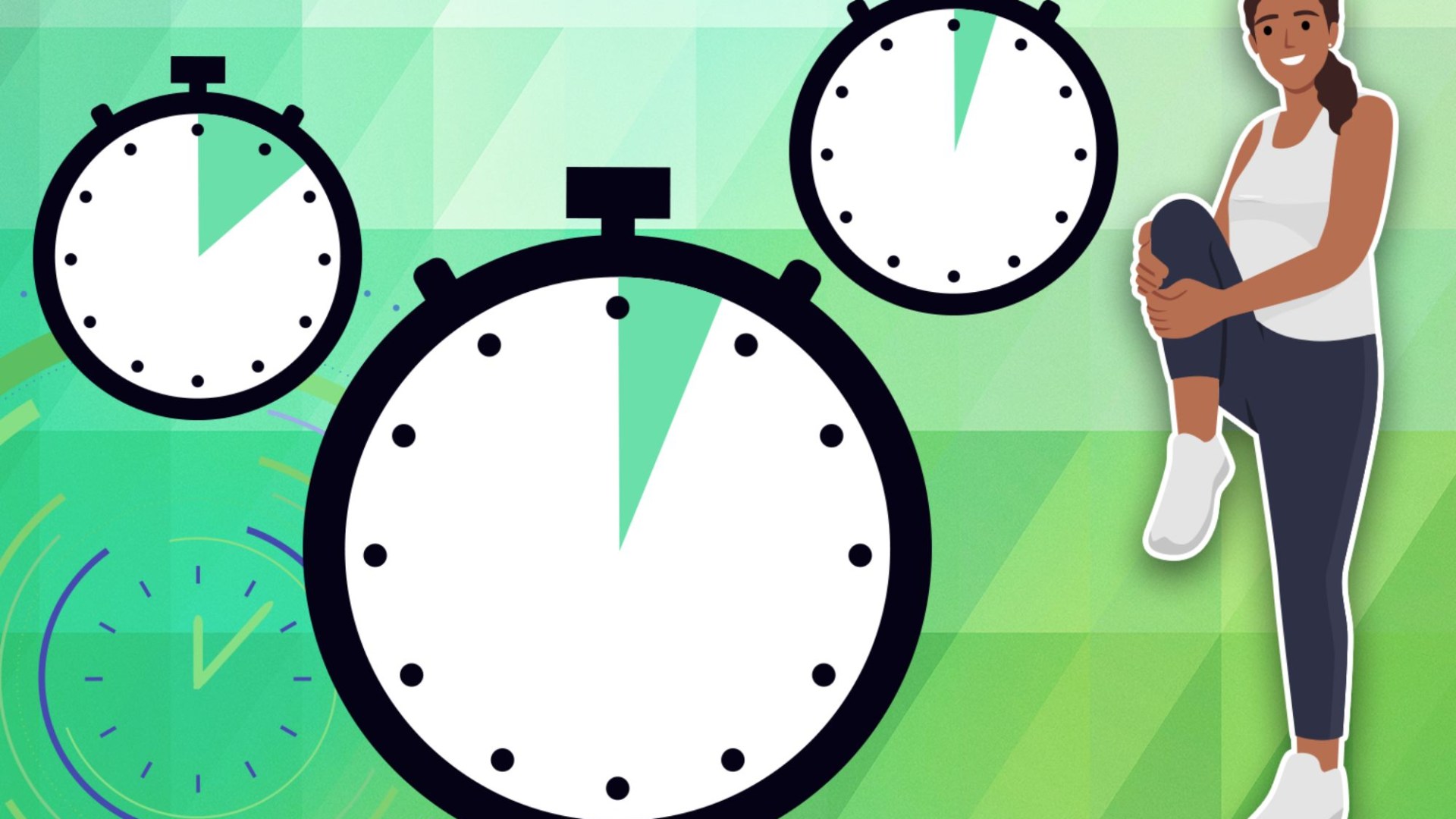CHECKING your biological age has never been easier after a new study revealed a simple test you can do at home.
Being able to hold a certain stance is a good way to measure your health, according to researchers.
2
The study, carried out by the Mayo Clinic, found the amount of time you’re able to balance on one foot for can indicate how strong your bones, muscles and nerves are – which are all signs of frailty.
Being frail can increase the risk of adverse health outcomes, including increased risk of infections, difficulty recovering from surgery, and more falls.
The average 50 year old was able to balance for roughly nine seconds, while an 80 year old was only able to manage around three seconds.
Standing on one leg requires good balance, which is linked to good brain function, muscle strength, and blood flow.
Read more on living longer
It also needs good coordination, as the brain integrates signals from the inner ears, eyes, joints, and muscles to maintain balance.
There are a few ways to test longevity, many of which can be costly.
Blood tests can assess your overall health and potential risk factors for age-related diseases, and functional tests, like VO2max, measure the amount of oxygen your body can use,
But scientists, like those from the Mayo Clinic, are looking for simpler and more cost effective ways to get a clear picture of a person’s health.
As part of the research published in the journal PLOS one, people aged 50 and older were tested to see how long they could hold a one-legged stance on their dominant and then non-dominant leg.
The amount of time was found to significantly decrease with age.
This showed a larger decline than two other age-related measurements – gait, which is how a person walks, and muscle strength.
The study’s senior author Dr Kenton Kaufman explained being able to stand on one leg is a good measure of a person’s overall health system because balance reflects how the body’s systems are working together.
Dr Kenton, who’s also the W. Hall Wendel Jr. Musculoskeletal Research Professor at the Mayo Clinic in Rochester, Minnesota, added: “Good balance provides the ability to carry out activities of daily living without the dear of falling, and this leads to improved quality of life and healthy ageing.”
Get a grip
The study involved 40 participants, all in similarly good health with no neuromuscular disorders.
Previous ones have also demonstrated the ability to balance declines with age.
But the new study compared the ability with other muscular factors, such as hand grip and knee strength, as well as gait speed.
All the measurements declined with age – dominant grip strength declined at a rate of 3.7 per cent and knee strength declined at a rate of 1.4 per cent per decade.
But the ability to balance while holding a one-legged stance deteriorated at the fastest rate.
Dr Kaufman said balance is important for preventing injuries, and that those unable to balance on one leg for more than five seconds could be at risk of falling more.
A study published in 2022 found the ability to balance is linked to a longer life, with a 84 per cent higher risk of death from any cause among those unable to stand on one leg unsupported for 10 seconds.
For those under the age of 50, Suffolk and North East Essex NHS Foundation Trust says if you’re aged between 18 and 39 you should be able to stand on one leg continuously for 43 seconds. If you’re aged between 40 and 49, 40 seconds.
Doing the one-legged test doesn’t require any special equipment and can be easily done at home.
According to Dr Kaufman, if you’re unable to stand on one leg for long it could be a sign of a health condition, such as cardiac problem or a brain or nervous system issue, such as a stroke, dementia or Parkinson’s disease.
It could also be a sign someone is experiencing side effects from medication.
If someone is unable to stand on one leg for more than five seconds, Dr Kaufman recommends making an appointment to see your doctor.
What can you do to improve balance in old age?
While the study focused on adults 50 and older, the test is also “applicable to younger people in that you want to protect what you have,” said Kaufman.

2
He advised: “If you continue to train your balance system as you’re young, you should maintain that as you age,”
The NHS recommends a number of exercises to help improve balance.
One is sideways walking:
- Stand with your feet together, knees slightly bent
- Step sideways in a slow and controlled manner, moving one foot to the side first
- Move the other to join it
- Avoid dropping your hips as you step. Perform 10 steps each way or step from one side of the room to the other
Another is heel-to-toe walk:
- Standing upright, place your right heel on the floor directly in front of your left toe
- Then do the same with your left heel. Make sure you keep looking forward at all times. If necessary, put your fingers against a wall for stability
- Try to perform at least five steps. As you progress, move away from the wall
How to slow down ageing
Stay active – Regular physical activity is crucial for maintaining musculoskeletal health and preventing age-related decline. Incorporate a mix of cardiovascular exercise, strength training, flexibility exercises, and balance training into your routine. Aim for at least 150 minutes of moderate-intensity aerobic activity or 75 minutes of vigorous-intensity activity per week, along with muscle-strengthening activities on two or more days per week.
Do strength training – Strength training is particularly important for preserving muscle mass, bone density, and joint health as you age. Focus on exercises that target major muscle groups, including squats, lunges, deadlifts, chest presses, rows, and shoulder presses. Gradually increase the intensity and resistance of your workouts to challenge your muscles and stimulate growth.
Consider your posture – Poor posture can contribute to musculoskeletal pain and dysfunction, especially as we age. Incorporate posture-improving exercises and stretches into your routine to strengthen weak muscles and improve flexibility.
Focus on flexibility – Maintaining flexibility is essential for preserving joint range of motion and preventing stiffness and injury. Incorporate stretching exercises into your daily routine to improve flexibility and mobility in key areas such as the hips, hamstrings, shoulders, and spine. Incorporating activities like yoga or Pilates can also help enhance flexibility, balance, and body awareness.
Support joint health – As we age, the risk of developing degenerative joint conditions such as osteoarthritis increases. To support joint health, maintain a healthy weight to reduce excess stress on your joints, and incorporate joint-friendly activities like swimming, cycling, or walking into your routine. Consider incorporating supplements such as glucosamine, chondroitin, and omega-3 fatty acids, which have been shown to support joint health and reduce inflammation.
Eat a balanced diet – Nutrition plays a crucial role in musculoskeletal health and overall aging. Ensure your diet is rich in nutrient-dense foods such as fruits, vegetables, whole grains, lean proteins, and healthy fats. Adequate intake of calcium, vitamin D, magnesium, and other essential nutrients is important for maintaining strong bones and muscles. Limit your intake of processed foods, sugary snacks, and excessive sodium, which can contribute to inflammation and accelerate aging.
Stay hydrated – Proper hydration is essential for maintaining joint lubrication, supporting muscle function, and facilitating nutrient transport throughout the body. Aim to drink at least 8-10 glasses of water per day, or more if you’re physically active or live in a hot climate. Limit your intake of caffeinated and alcoholic beverages, as they can contribute to dehydration and exacerbate musculoskeletal issues.
Get quality sleep – Quality sleep is essential for musculoskeletal recovery, repair, and overall health. Aim for 7-9 hours of uninterrupted sleep per night to allow your body to rest and rejuvenate.
Manage stress – Chronic stress can have detrimental effects on musculoskeletal health and accelerate the ageing process. Incorporate stress-reduction techniques into your daily routine.
Source: The Royal Orthopaedic Hospital NHS Foundation Trust




